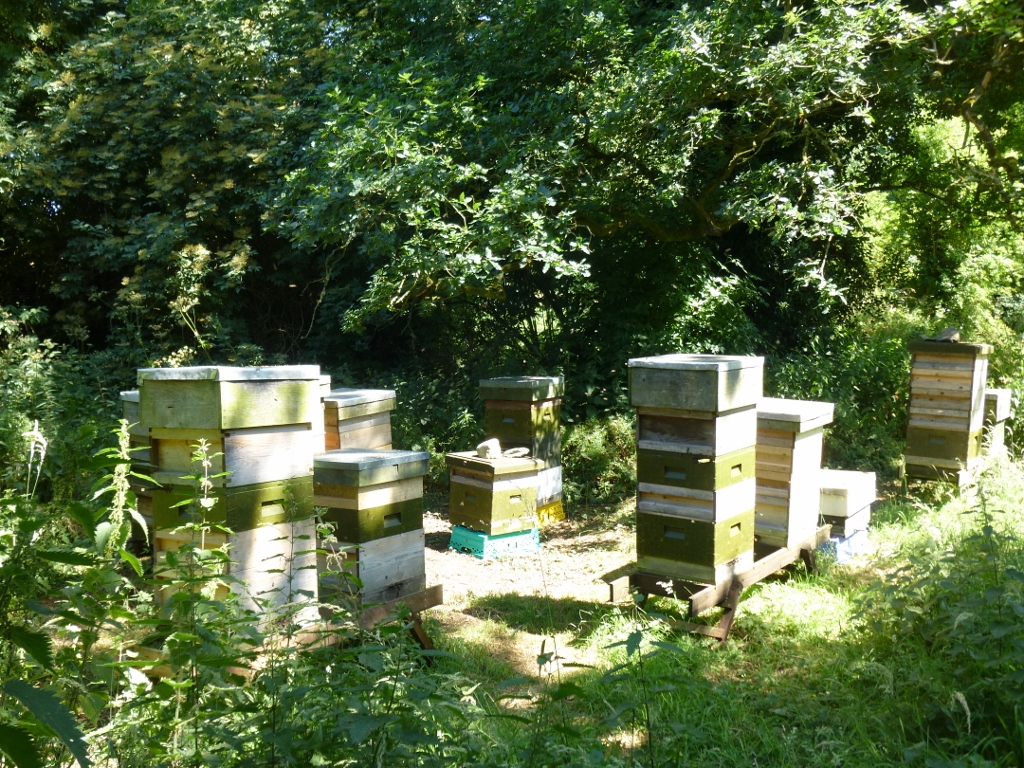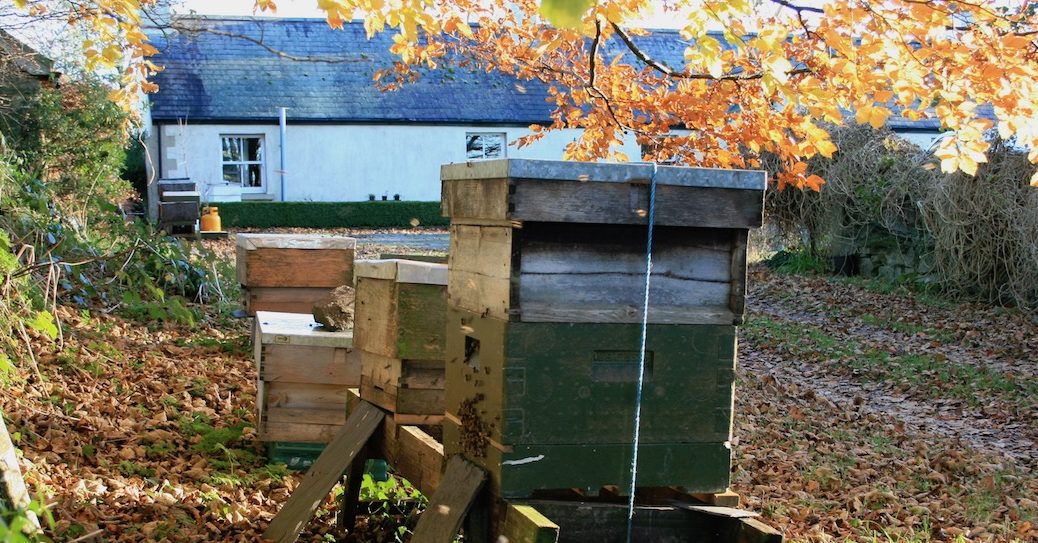For anybody thinking about getting bees, an important consideration is – where to put them?
There is no perfect site for bees but there are points to consider – some affect the summering and some affect the wintering. It’s all swings and roundabouts (or snakes and ladders) with bees.
Accessibility
If not in the beekeeper’s garden, the prospective site needs to be accessible by the beekeeper and a vehicle of some description – be that a wheelbarrow or a van – in order to place the hives and to remove the honey later. There’s a thing called a Scottish carrier which you can make from a couple of broomsticks and some 2×1. It defies description but you operate it like a highland sedan chair – a person each end and a stack of supers in the middle. The heavier the load the tighter the grip – I’ve never known it to slip however jauntily you trot through the heather.
Food and Water
For the bees it will need to be close to sources of nectar, pollen and water, throughout the season (unless the beekeeper intends to migrate the hives) or they will be unable to produce much honey and may even starve. They will forage for up to 3 miles but that’s a long way to go for your bread and butter. Starvation is unlikely but can happen in upland areas where forage is in short supply and the season is that much shorter.

The Elements
Assuming that these basic requirements are satisfied, the site should be neither too damp nor situated in a frost pocket and it should also be sheltered from strong winds.
Ideally the hives would face east or south to catch the early morning sun and not be under trees as some beekeepers believe that the heavy dripping of water from the trees onto the roofs of the hives can make the bees irritable and such sites are often damp. On the other hand, some of the most productive apiaries I’ve ever seen were in under dense canopies of trees.
A little winter sunshine is very beneficial to the bees but too much sun in the summer will make them swarm. The obvious answer to this conundrum is to place them within the south facing edge of a deciduous wood where the bareness of the winter trees would allow the rays of the sun to hit the faces of the hives yet the fullness of the summer canopy of leaves would provide shade from the midday summer sun. Like this very productive site:
Neighbours
The final factor to consider is proximity to neighbours – equine or human because bees sting and stings or the results of them can be serious. They also swarm which could be viewed as a nuisance by neighbours depending on where they land. It is said that bees dislike horses and will sting without provocation; bolting horses can be dangerous to riders, traffic and spectators. Bee-stings can be painful to humans too and neighbours can be obnoxious, allergic and litigious. Insurance is essential and membership of the local beekeepers association also gives access to group insurance.
Vandals
The sight of a row of hives could prove irresistible to these, who will wreak havoc if they can so it is best that hives be sited out of sight of roads or footpaths. In short, the further from your fellow man the better.
In recent years, apiaries have been targeted by thieves. Bearing in mind that a full hive with a couple of supers is worth in the region of €500 or more this is hardly surprising.
Click here for some notes on a good Heather Site
Copyright © Beespoke.info, 2014. All Rights Reserved.
